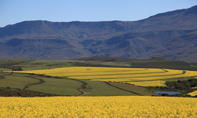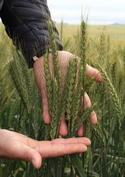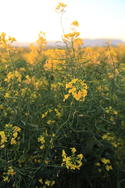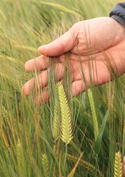The most important winter cereals in South Africa are wheat, canola and malting barley, with the majority of these produced in the winter rainfall area of South Africa – the Western Cape.

Production in this province takes place in the Southern Cape and Swartland, where wheat usually forms the main income stream.
With limited crop choices to rotate with wheat, these farmers often keep livestock, such as sheep or cattle, to add value to feed crops in the rotation, such as lucerne, medics and lupines.
Wheat

South Africa is a net importer of wheat, which means we have to import large volumes of wheat to make up for the shortfall in local production.
The area under production has declined significantly over the years, due to poor profitability and the high risks associated with production, whereas volumes produced per hectare have increased thanks to improved farming techniques and efficiencies.
Wheat is produced throughout South Africa, albeit in very small volumes in some provinces, either on dryland or under irrigation.
The Free State in the summer rainfall area used to be seen as the breadbasket of the country, because of the high volumes produced there, but production in the region has been downscaled significantly over the past decade as farmers rather opt for crops with higher income potential and lower associated risks.
With limited production alternatives, the Western Cape in the winter rainfall area, which includes the Swartland and Southern Cape, has since overtaken this role and now accounts for about half of South Africa’s total area under production. Wheat in the province is produced under dryland conditions.
Canola

Canola production is a winter crop and therefore primarily produced in the winter rainfall area – Western Cape.
Trials are nevertheless increasing to identify other areas to also produce this crop, because of the growing demand for canola oil.
Production used to be less profitable than wheat production, so farmers primarily planted it because of its benefits as a rotation crop.
It helps to break disease cycles associated with wheat produced as a monoculture and allows farmers to rotate their herbicides for better weed control.
Improved efficiencies have nevertheless improved canola earnings, turning it into a crop worth planting in its own right.
Malting Barley

Barley is planted in South Africa for malting purposes, as its value as feed does not justify the high risks associated with production. Most of the barley is sold to one major brewery, AB InBev.
While small volumes can be sold to small breweries, this usually does not make commercial sense. Barley is planted under irrigation in the Northern Cape and on dryland in the Southern Cape.
The availability of new varieties has led to production now also expanding to the Swartland in the Western Cape.
By Glenneis KrielFor bulk or Winter Cereals export enquiries please use the enquiry link below.